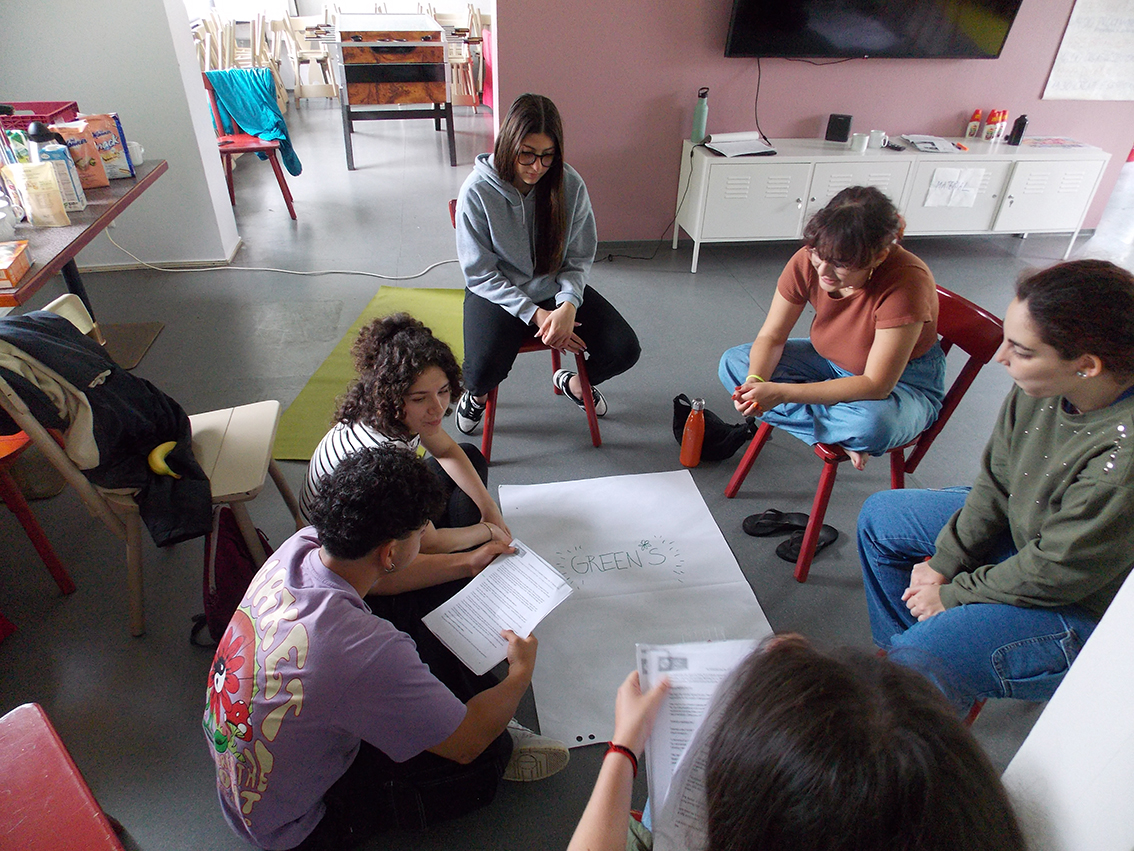Election Programmes Workshop
Download the methods
To download the methods, click here
Target group
No. of pax
Environment
Time needed
Materials
Printed election programmes (or excerpts) on a specific topic (e.g., climate, migration), pens, flipchart paper, markers, sticky notes.
Objective/aim
The activity aims to strengthen participants’ skills in critically analysing political texts, encourage active participation in democratic processes, and empower young people to form their own opinions on party positions regarding a specific topic.
Step by step instructions
Preparation
Print and prepare the parties’ or party groups’ election programmes on the selected topic. Clearly label each set of documents with the party name and place them on separate tables.
Step 1
Group division
Divide participants into smaller groups (3–5 people per group) and assign each group to one party table. Ensure all groups have pens and paper. (5 minutes)
Step 2
Content analysis
Each group reads and summarises their assigned party’s position on the topic. They note the key demands, proposals, and arguments on flipchart paper. Encourage them to focus on the main points rather than details. (20 minutes)
Step 3
Critical discussion
Groups discuss internally what they think about the party’s position, whether they agree or disagree with the party’s programme. They also reflect on what might be missing or unclear. All comments should be noted on the flipchart. (20 minutes)
Step 4
Developing own proposals
Each group formulates their own policy suggestions or alternative ideas on the topic. These should be presented clearly (as bullet points or a short manifesto) on a new flipchart sheet. (30 minutes)
Step 5
Group presentations
Groups present their analyses and proposals to the whole group. After each presentation, allow for a few questions and short feedback. (30 minutes)
Step 6
Reflection and conclusion
Facilitate a final reflection round to consolidate the learning. Possible guiding questions (15 minutes):
• What did you learn about the different party positions?
• Did anything surprise you?
• How did it feel to create your own demands?
• Why is it important to read party programmes before voting?
Tips for the trainer
Move between groups to answer questions, clarify terms if needed, stimulate discussion, and ensure equal participation. Remind groups to focus on key points rather than getting lost in details. Consider using a timer to keep each step on track.
Alternative
Step 6: Optional World Café
As an alternative to step 4, you can open a general World Café discussion on the same topic. Use the party analyses as starting points to deepen the debate and gather collective insights. (30–45 minutes)
Participants can work with speeches, campaign videos, or social media posts instead of written programmes.
Comment
Source
Developed as part of the My Elections-My EU! project by Südwind and inspired by World Café and participatory education methods.


